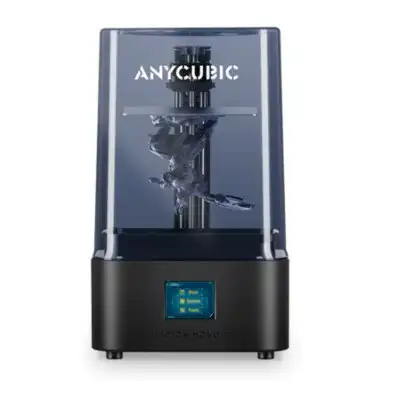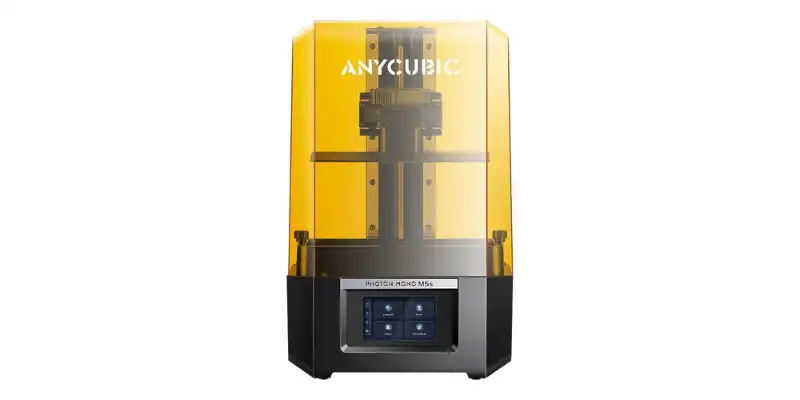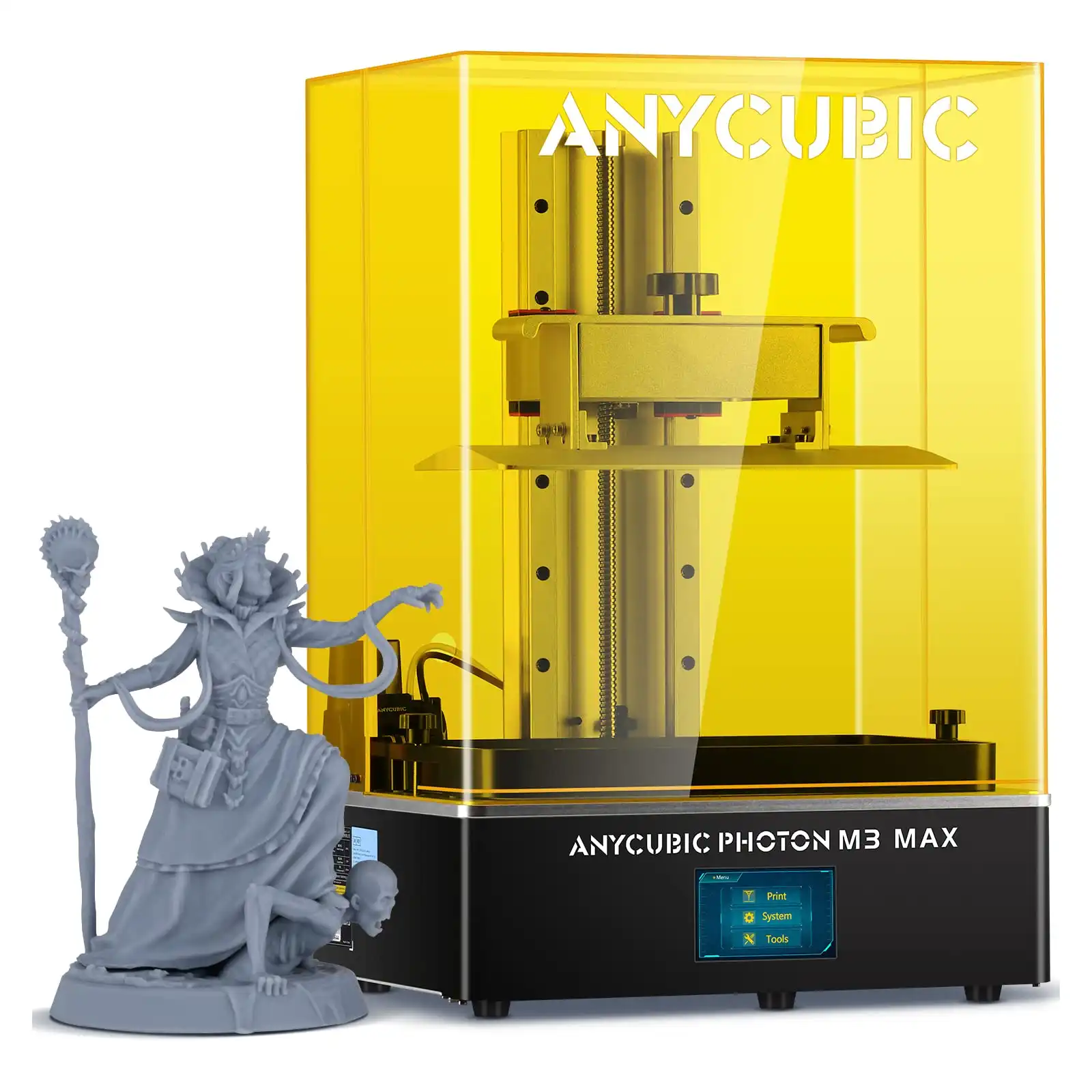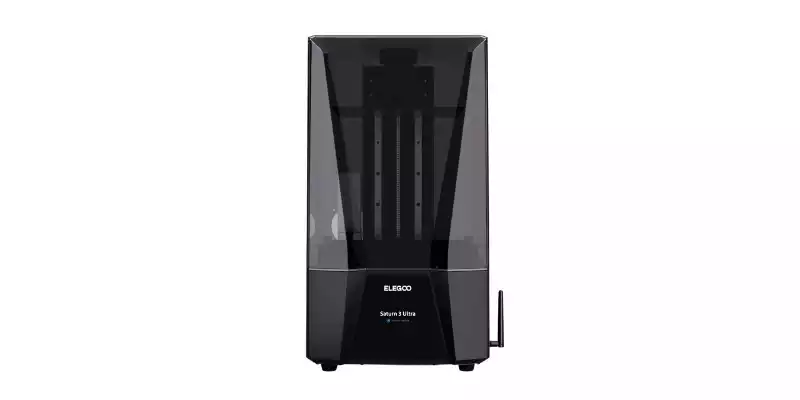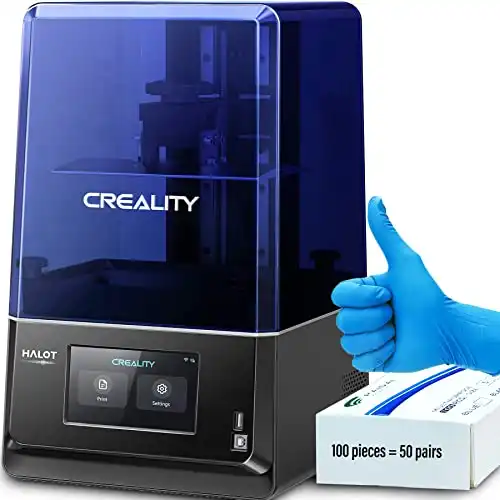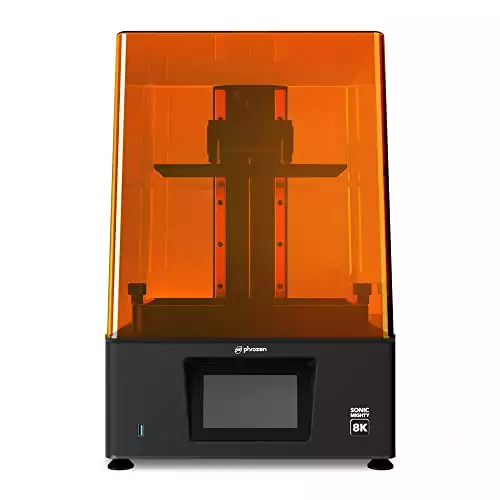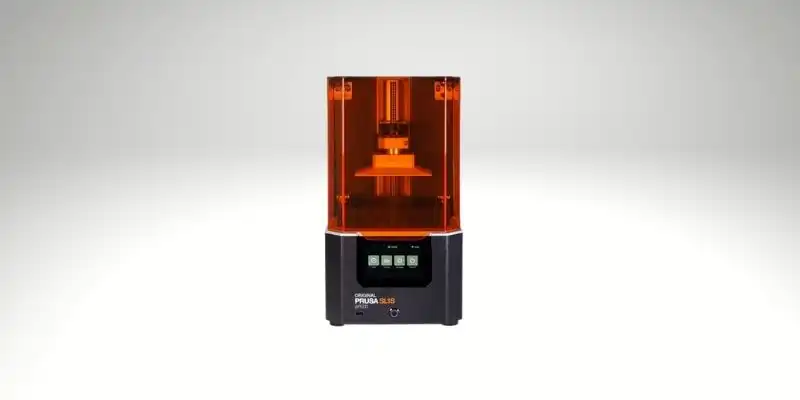Here’s my top picks for the best resin 3D printers in 2024, for every price range and for every specific use case:
The best resin 3D printer right now is the Anycubic Mono M5s.
The Mono M5s has top-tier 12K resolutions and prints fast at 70mm/hr even without high-speed resin, beating out everything in its price range.
But, if you’re on a tight budget, I recommend the Anycubic Mono 2 instead at the most affordable resin printer. It’s under $200, still has a decent 4K LCD, and produces prints with 34-micron XY resolutions.
The best large-format resin printer is still the Photon M3 Max. It’s under $1,000, yet still offers huge 298 x 164 x 300 mm print areas for batch-printing dozens of miniatures at once, or for printing larger resin prototypes.
|
|
|
|
|
4.3
|
4.7
|
4.5
|
|
$149.00
|
$449.00
|
$959.99
|
|
165 x 89 x 143 mm
|
200 x 218 x 123 mm
|
298 x 164 x 300 mm
|
|
4K
|
12K
|
7K
|
|
34 microns
|
19 x 24 microns
|
46 microns
|
|
50 mm/h
|
70 mm/h or 105 mm/h
|
60 mm/h
|
|
|
Read on for my detailed breakdown of each, as well as few tips and tricks for getting the most out of your resin printing experience!
| Resin printer | Best for? | Build Volume | LCD Resolution | XY Resolution | Print Speed | Best price at | Also available at |
|---|---|---|---|---|---|---|---|
| Anycubic Mono M5s | Overall Top Pick | 200 x 218 x 123 mm | 12K | 19 x 24 microns | 70 mm/h or 105 mm/h | Anycubic Store here | Amazon here |
| Anycubic Mono 2 | Budget Pick | 165 x 89 x 143 mm | 4K | 34 microns | 50 mm/h | Anycubic Store here | |
| Anycubic M3 Max | Best Large-Format | 298 x 164 x 300 mm | 7K | 46 microns | 60 mm/h | Anycubic Store here | Amazon here |
| Phrozen Sonic Mini 8K | Low-Cost Super Precise Printing | 165 x 72 x 180 mm | 8K | 22 microns | 80 mm/h | Phrozen Store here | |
| Prusa SL1S Speed | Fast High-Resolution Printing | 120 x 68 x 150 mm | 2560 x 1620 pixels | 47 microns | 50mm/h | Prusa Store here | Amazon here |
1. Anycubic Mono M5s: Best Overall
- Price: Check latest price at Anycubic here / Amazon here
- Build volume: 200 x 218 x 123 mm
- LCD Resolution: 12K
- LCD Size: 10.1 inches
- XY Resolution: 19 x 24 microns
- Connectivity: USB
- Print Speed: 70 mm/h or 105 mm/h with high-speed resin
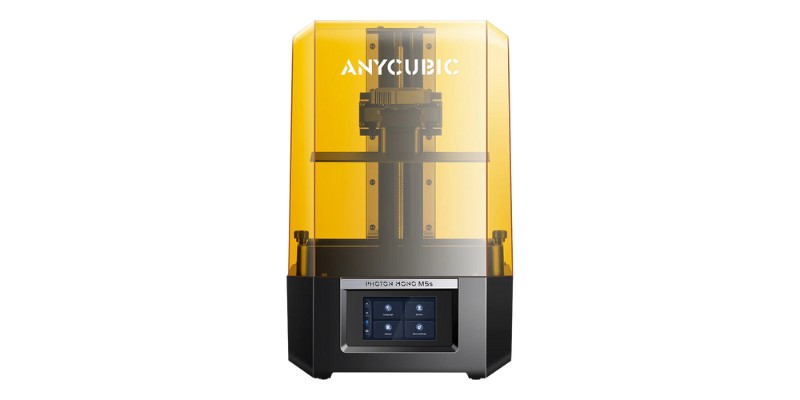
Pros
Impressively detailed 12K prints
Fast print speeds
Automatic bed leveling
Smart features for hassle-free printing
Cons
Requires specialty, high-speed resin to reach the fastest print speeds
The Anycubic Mono M5s is the printer resin enthusiasts have been waiting for.
It features automatic bed leveling, along with a host of automatic smart sensors to make printing easier and less error-prone, resin level detection in the vat, pre-print checks, print failure detection, and film wear and tear monitoring, to name a few.
The idea is to drastically improve the success of your prints… while also ensuring the printer stays in optimal condition.
But these clever additions are only a part of the package. The Anycubic Mono M5s has a detailed 12K LCD and print speeds up to 105 mm/h.
The 12K pixel count allows for a crisp, extremely sharp 19-micron XY resolution, providing a level of detail that makes the intricate features on tiny models like miniatures pop and shine.
However, this really depends on what you’re printing: a low-detail model swiped off of Thingiverse will come out identically to any run-of-the-mill 4K printer, but a high-quality model dripping with detail will benefit hugely from the bump to 12K.
A new, easy-release film that requires less force to detach a cured layer of resin, specialty high-speed resin, and shorter exposure times makes the overall print speed faster. I think I speak for everyone when I say that this is what the community has been clamoring for for a while now.
Specialty resin can be expensive, but the option is still there if you don’t mind this extra cost.
There’s also Wi-Fi connectivity, and a mid-sized 200 x 218 x 123 mm build volume, large enough for batch printing miniatures, figurines, jewelry, and much more.
Overall, the Anycubic Photon Mono M5s is the best overall resin 3D printer out there today. It’s also the best medium-sized resin printer.
Runners-Up: Anycubic Mono 2, and Elegoo Saturn 3 12K
However, if the price is a little too steep and you don’t need all the fancy trimmings or 12K details, try out the Anycubic Mono 2. Priced at under $200, it’s a solid budget printer that despite lacking the advanced features of M5s and having a smaller build volume, produces high-quality prints.
For a good in-between printer, I recommend the Elegoo Saturn 3 12K. Priced at $399, it’s more affordable, packs in a 12K LCD, a roomier 219 x 124 x 250 mm build volume, and extras like a plug-in air purifier to keep those resin fumes at bay.
But, it lacks the smart features that make the Anycubic Mono M5s our top pick in the medium sized resin 3D printer space. If you’re a hobbyist that wants all that crisp detail but aren’t fussed about self-led troubleshooting, then the Elegoo Saturn 3 12K is the smarter choice.
This premium 3D printer boasts an extra-large 218 x 122 x 250mm build area to create epic miniatures and models in stunning 12K clarity.
Perfect with Windows and MacOS, it works seamlessly with Chitubox and other Mac-compatible software.
Get professional-quality prints at half the cost of other printers, bringing affordable excellence in 3D printing to your desktop.
2. Anycubic Mono 2: Best Budget Resin Printer For Beginners
- Price: Check latest price at Anycubic here
- Build volume: 165 x 89 x 143 mm
- LCD Resolution: 4K
- LCD Size: 6.6 inches
- XY Resolution: 34 microns
- Connectivity: USB
- Print Speed: 50 mm/h
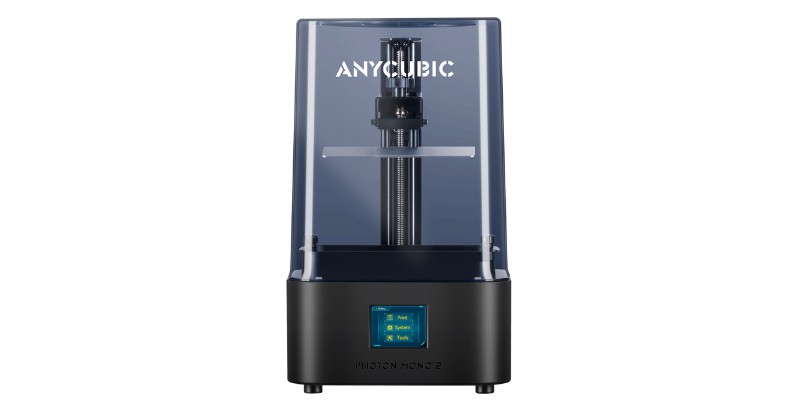
Pros
4K prints
Easy to use
Affordable
Compact and lightweight
Cons
Small build volume
Build quality
The Anycubic Mono 2 is a compact starter resin printer that produces impressive 4K quality prints. From unboxing to producing your first print, the Anycubic Mono 2 is designed from the ground up for ease, ideal if you’re looking for a beginner-friendly and cheap printer to churn out high-quality resin prints.
It features a respectable 165 x 89 x 143 mm build volume, making it suitable for batches of minis, small figurines, and other small-ish decorative pieces. The LCD pushes a 4K resolution (which in 2023 is the standard), and produces high-quality prints.
The 34-micron XY resolution rivals more expensive machines, another impressive spec given the Mono 2’s low price. Exposure times keep print speed to a competitive 50 mm/h, on par with not just other budget and mid-range alternatives.
At under $200, the Anycubic Mono 2 cuts some corners, but these don’t affect print quality. You feel it in the cheap-feeling plastic used on the printer and cover. Honestly, compared to pricier models like the Mono M5s or Phrozen 8K, the Anycubic Mono 2 feels like a budget printer.
The benefit, however, is that the Anycubic Mono 2 is quite a bit lighter, which makes it easier to move around.
One of the best budget resin 3D printers out right now - ideal for beginners who want a low-cost entry into resin printing. You won't get the same level of quality as in the Elegoo Saturn range, but it's a great starting point.
Runner-Up: Creality Halot-One Plus
If you want a bigger build volume for large batch printing, for example, I recommend the Creality Halot-One Plus with its 172 x 102 x 160 mm build plate.
And, while a 4K resolution should suit most users, if you need finer and crisper details, I recommend the Mars 4 9K, with its 9K LCD.
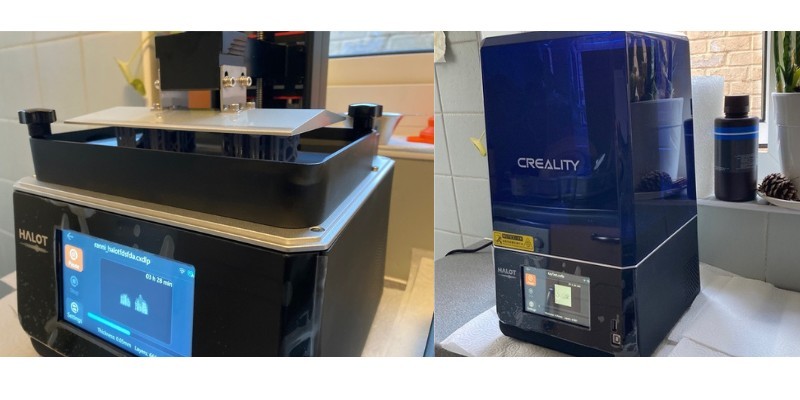
3. Anycubic Photon M3 Max: Top Large-Format Pick
- Price: Check latest price at Anycubic here / Amazon here
- Build volume: 298 x 164 x 300 mm
- LCD Resolution: 7K
- LCD Size: 13.6 inches
- XY Resolution: 46 microns
- Connectivity: USB
- Print Speed: 60 mm/h
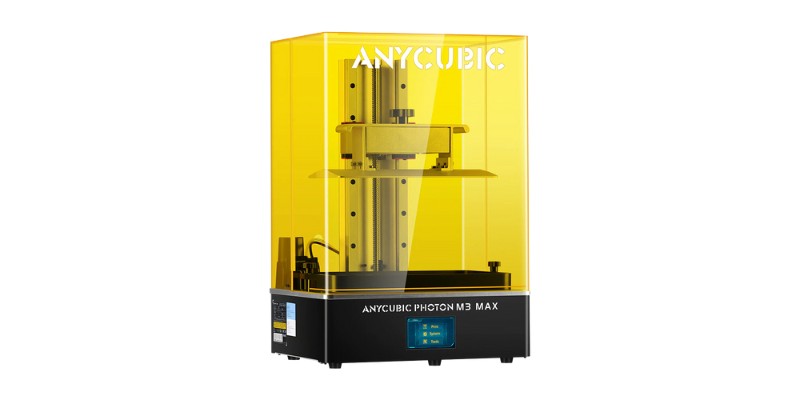
Pros
Massive build volume
High-quality 7K resin prints
Cons
One of the more expensive large-format resin 3D printers
The Anycubic Photon M3 Max is the best medium-to-large resin printer for both amateurs and professionals. It’s capable of producing highly detailed, crisp prints.
The headline is obviously the massive 298 x 164 x 300 mm build volume. With this, expect to print big batches of miniatures and far larger individual models than you would, on say, the Anycubic Mono 2.
The real trick here is that Anycubic supersizes the build volume while weaving in a 7K LCD and respectable 46-micron XY resolution, meaning every individual model, however small, still has a high-quality finish.
While the 60 mm/h print speed won’t turn any heads, combine it with the large build volume and you can print a lot of models per hour.
To hammer this home, Anycubic has included an auto-refill system that automatically tops up the vat with the resin, speeding things up and saving you the hassle. Simply fire off a print, get on with other work, and know that when you return it will still be printing smoothly.
I think this is the best large-format resin 3D printer, but there are alternatives available. These include the Phrozen Mighty 8K, the most direct competitor to the Photon M3 Max.
Runner-Up: Phrozen Mighty 8K
The Phrozen Mighty 8K sports a smaller 218 x 123 x 23.5 mm build volume, but has a more accurate 28-micron XY resolution, slightly faster 70 mm/h print speed, higher resolution 8K sceren, and is almost $200 cheaper.
If you can live with the smaller build area, then the Phrozen Mighty 8K offers a bump in print quality with slightly richer details and print speeds over the Anycubic Photon M3 Max.
4. Phrozen Sonic Mini 8K: Super Precise Budget Resin 3D Printer
- Price: Check latest price at Phrozen here / Amazon here
- Build Volume: 165 x 72 x 180 mm
- XY Resolution: 22 microns
- Minimum Layer Height: 10 microns
- Speed: 80 mm/h
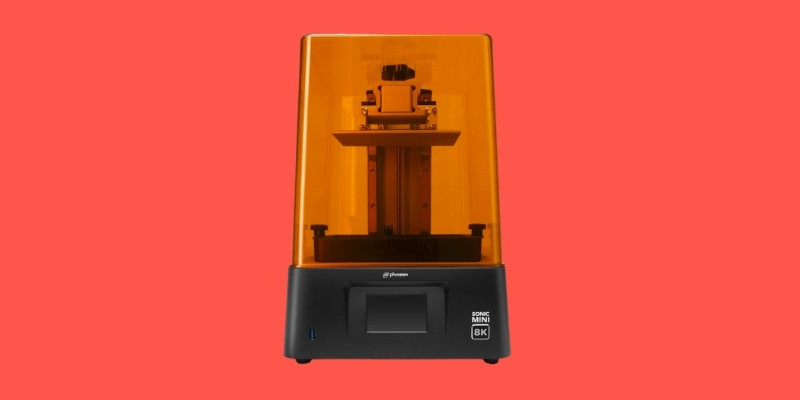
Phrozen’s flagship resin printer capitalizes on a sleek 7.1″ LCD screen and 22-micron resolution to deliver frankly outstanding print detail and surface quality that more budget-priced printers simply can’t provide.
As consumer printers go, the Phrozen Sonic Mini 8K has the potential to produce the most intricate, detail-rich models of any printers currently on the market.
The jump from a 2K, and even a 4K/6K, to an 8K screen is apparent when scrutinizing a print fresh off the Mini 8K bed. This is the main reason it out-classes Phrozen’s excellent budget Sonic Mini 4K, albeit with a hefty but warranted price increase.
For lots of makers, the jump in quality won’t be enough to justify spending more than double the price of a Photon or Mars, but the Phrozen Sonic Mini 8K fleshes out the proposition with superb all-around usability and a decent 165 x 72 x 180 mm build volume.
If that’s not quite enough for your larger print projects or you’re looking to batch print to stock an online mini store, there’s always the Phrozen Sonic Mighty 8K, and its 123 x 218 x 235 mm printable area.
5. Prusa SL1S Speed: Fastest High-Res Printer
- Price: Check latest price at Prusa Store here / Amazon here
- Print Volume: 120 x 68 x 150 mm
- Screen resolution: 2560 x 1620 pixels
- Screen size: 5.96” 2K Monochrome LCD
- XY Resolution: 47 microns
- Print Speed: 50mm/h
- Cleaning/Curing: Original Prusa CW1S
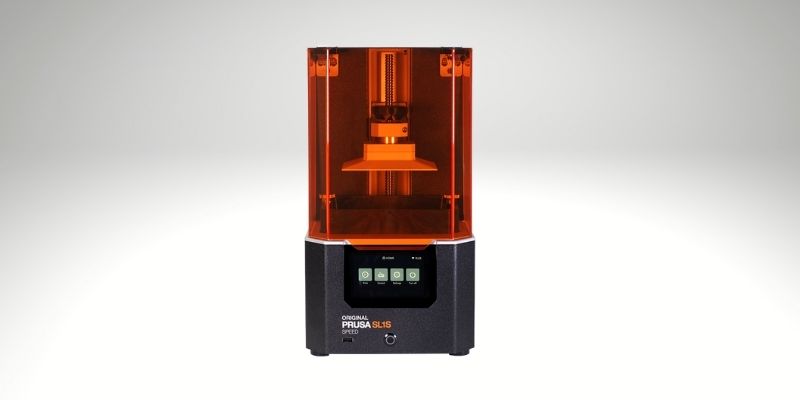
Prusa printers are known for being the best open-source FDM kits around, but have since ventured into resin printing.
One thing we really want to drive home is how important it is not to get tunnel vision when looking at the specs of printers when choosing which to buy. As we explain in the buyer’s guide portion below, a well-made printer made from high-quality parts that can handle precise movements and stability will outperform a printer with a higher-spec LCD screen but worse build quality.
The 5.96” monochrome LCD is smaller than some lower-priced printers like the Elegoo Saturn 2, but it is capable of fantastic accuracy, even for tiny miniature models smaller than a penny. It’s made from high-quality parts to minimize vibrations, with a rigid aluminum body, and features a quick release mechanism to maintain z-axis calibration.
It’s also super fast, with 1.4-second layer exposures even on standard 405nm resins. If you’re a small business owner looking to produce minis at scale, or just want to print lots of models for yourself, the SL1S Speed suits you well.
You can buy the printer on its own, or as a bundle with the CW1S 4-in-1 wash and cure machine. It pre-heats your resin before use, washes resin prints, dries them off, and cures them, all in one add-on. The bundle is available here.
Buyer’s Guide – How To Pick a 3D Resin Printer
- Price: Decent resin 3D printers start at around $200. These have a 4K screen that can print somewhat detailed features on miniature models. Better build quality resin printers with 8K screens and larger build volumes cost $600 to $1,000+, and professional resin 3D printers cost $3,500 and up.
- Get an LCD mono screen: Don’t get an outdated RGB screen. Mono resin printers print 3x faster, and last 4-5x longer before they need replacing.
- Resolution: Better resolutions lead to better quality overall. You’ll notice the difference in sharpness on corners and on precise features of models such as facial features and hair on an 8K screen versus a 4K or 2K print. However, even the highest resolution 3D printer will perform worse than a lower-res 2K screen if it is built from low-quality parts. Therefore, buy from a reputable brand known for making high-quality parts, such as well-built screws and z-axis parts for the build plate, and resin vat screws, to deliver top quality.
- Size: Resin printers can cure entire layers at once, making them much faster than FDM printers. It also makes build volume so much more important, as larger sizes means you can print more models at once as you cure the entire layer. However, remember that the larger the build volume, the further the pixels have to stretch, which reduces resolution and precision. As a result, larger resin printers need a larger LCD screen with more pixels to cover a larger area.
- Post-processing: Post-processing breaks down into two parts: washing and curing. You can manually wash and cure prints, but I recommend paying the $100 for a wash & cure kit to save you the hassle. I’ve written an in-depth article comparing the different wash & cure stations for a more detailed look.

How Does a Resin 3D Printer Work?
Resin is sticky, liquid, and moves around in any container (or resin vat) that you pour it into. However, take that container outside, and the sun’s UV rays will almost immediately cure and solidify the resin.
Your resin printer’s LCD screen uses the same UV light as the sun but in a more stable, indoor environment. Resin 3D printers flash light at certain parts of the resin to selectively cure parts, to create the model from your STL file.
Most low-cost resin printers now use LCD screens. The LCD screen blocks off the LEDs from certain parts so that the resin isn’t cured in some places – only where your model file is sliced to be.
The screen sits under the resin vat, and projects light upwards into the build platform. An FEP screen (fluorinated ethylene propylene) protects the screen from damage – though these FEP films themselves need to be replaced more often than any other parts of the printer.
As each layer is cured, the resin printer’s z-axis platform lifts up one layer, ready for the next resin layer to be cured. The cured model sticks to the build platform as it moves up out of the resin (if it sticks to the resin, the print fails), with the layer on the edge cured and moved up each time.
Resin 3D Printing Tips for Beginners:
- Check the MSDS (material safety data sheet) for the resin you’re using. All reputable resin manufacturers will have these sheets. They outline any potential hazards, and how you can keep safe and prevent these issues.
- Print in a relatively warm environment: room temperature is fine, but if resin gets too cold, it becomes more viscous and difficult to print.
- Wear gloves when handling resin: nitrile rubber disposable gloves work well.
- Pick the best slicer for you: if you use a certain brand such as Prusa, you’ll likely use Prusa Slicer. For simple everyday use, CHITUBOX is fine, but other options for great resin results include Lychee Slicer. We have a full run-down of resin slicers here.
- Take care over supports: within your slicer, take care over how you position your model, and the supports you use. Flat printed models don’t work as well as they do in FDM, as you can damage the resin print when scraping it off – though there are workarounds with sacrificial rafts. Generally, lift the model off the bed and have supports between the bottom raft and the FEP sheet. There is also a very powerful tool called UVTools which automatically detects likely errors, resin traps and islands, and with one click fixes them all. It is available at Github here. It acts as a kind of previewer, showing you where the potentials for print failure are, so you can avoid the costly failed prints and optimize them automatically.
FAQs
What are the best resin 3D printer brands?
For the home resin 3D printing $200-600 range, the best resin 3D printer brands are Anycubic, Elegoo and Phrozen, who make high-quality printers capable of accurate details. In the professional resin printer range, Prusa, Formlabs and Peopoly are well-reputed, as well as industrial brands like 3D Systems, Carbon 3D and EnvisionTEC.
Is it worth getting a resin 3D printer?
Resin 3D printers can print incredible-looking details for miniatures that FDM simply can’t compete with, so for anything precise and detailed, resin printers can’t be beaten. However, if you want a simpler printing experience without washing or curing prints, or want to print large-scale models, go for an FDM 3D printer instead.
Do You Need To Wash and Cure Resin Prints?
Yes. The resin printing process leaves uncured residual resin on the finished part. Rinsing off the excess resin ensures all the detail and finish of the print remain accurate once you move to the curing process. There’s also a safety concern; washing resin prints removes potentially toxic uncured liquid resin, so you can handle the part safely.
Curing is an equally important part of the process. When a printer completes a part, the resin is in a transitory state: hard enough to retain the desired shape and detail but lacking overall rigidity, making it prone to scratches, scarring, and blemishes. By curing the print with UV, or even sunlight if you’ve got time on your side, the resin reaches its optimal, finished state.
What’s Changed?
We’ve updated this article significantly since we first wrote this article in 2018. Here are some of the recent updates and changes we’ve made.
Nov 2023:
- Added the Anycubic Mono 2 and Mono M5s, to our recommendations, replacing older models like the Photon M3, and Elegoo Mars 3.
- Removed the Formlabs Form 3, Anycubic Mono X, and Elegoo Saturn.
- Updated our buying guide to remove references to RGB screens.
Jan 2024:
- Updated pricing information for 2024.
If you liked this ranking, you may also like:
- Top 10 SLS 3D printers
- The best metal 3D printers
- Best Dual Extruder 3D Printers
- 3DSourced’s Overall Top 20 Best 3D Printers
- Our guide to the 10 types of 3D printers
- Best large resin 3D printers
- Best resin curing stations
- Best Resins for 3D Printers

